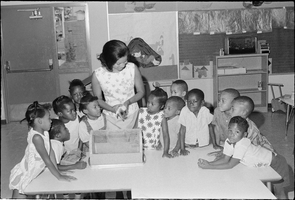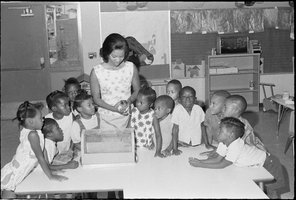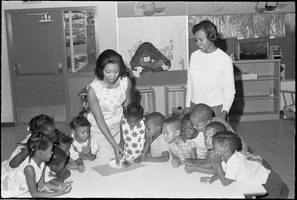Search the Special Collections and Archives Portal
Search Results
Barbara Givens oral history interview
Identifier
Abstract
Oral history interview with Barbara Givens conducted by Claytee D. White on October 05, 2005 for the UNLV @ 50 Oral History Project. Givens discusses moving to Las Vegas, Nevada from Reno, Nevada in 1952 and receiving a degree in teaching from what is now the University of Nevada, Las Vegas. She also talks about teaching in two Las Vegas high schools and a class for new teachers at UNLV.
Archival Collection
Carl Williams oral history interview
Identifier
Abstract
Oral history interview with Carl Williams conducted by Claytee D. White and Kelli Luchs on April 20, 2010 for the Boyer Early Las Vegas Oral History Project. In this interview, Williams discusses attending the Westside School starting in 1949. He recalls the teachers, staff, and describes the buildings as he remembers them. Lastly, Williams discusses activities held at the Westside School, community activities at the time, and his involvement with various churches.
Archival Collection
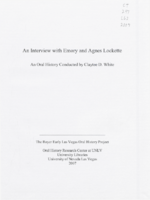
Transcript of interview with Emory and Agnes Lockette by Claytee D. White, March 11, 2005
Date
Archival Collection
Description
Interview with Emory and Agnes Lockette conducted by Claytee D. White on March 11, 2005. The Lockettes were the only African Americans to live in Boulder City during years of racial tension. Agnes taught kindergarten at Westside School, while Emory worked for the Bureau of Reclamation.
Text
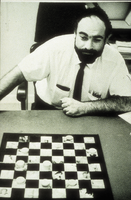
Slide of Lewis Simonoff, University of Nevada, Las Vegas, circa 1968
Date
Archival Collection
Description
Image
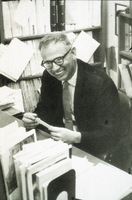
Slide of Herbert Wells, University of Nevada, Las Vegas, circa 1968
Date
Archival Collection
Description
Image
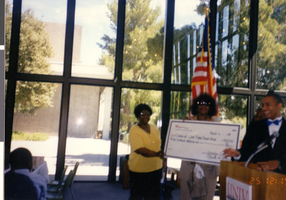
Photograph of Marzette Lewis with band director Anthony Marentic
Date
Archival Collection
Description
Color photograph of Marzette Lewis and Anthony Marentic accepting a five hundred dollar donation to Charles I. West Middle School Band.
Image
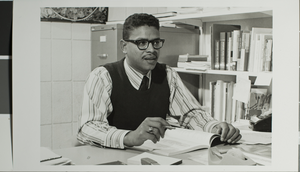
Photograph of Louis F. Labat, University of Nevada, Las Vegas, 1973
Date
Archival Collection
Description
Louis F. Labat, a specialist in geriatrics in the Department of Social Services, at the University of Nevada, Las Vegas.
Image
